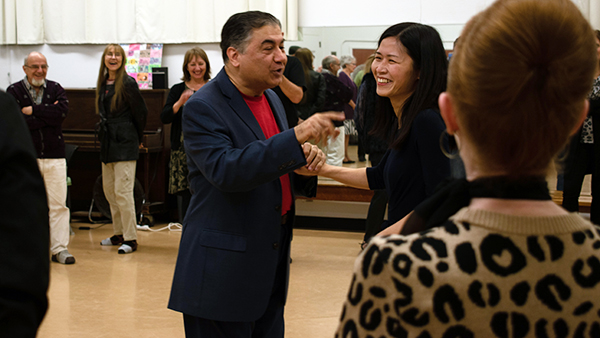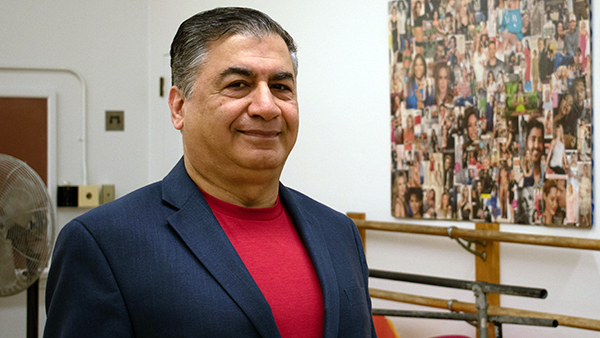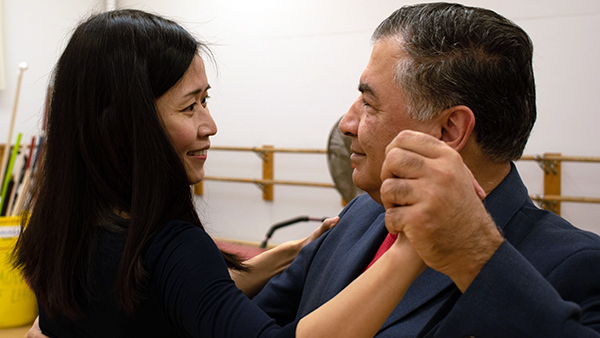Craig School of Business professor Sasan Rahmatian wants to share the art and passion of Argentine tango with the community.
“Argentine tango is the epitome of effective non-verbal communication that requires you to be completely present in the moment,” said Rahmatian, who has worked at Fresno State for 35 years.
Rahmatian’s love for tango stems from the art form’s rich musical history and its reflection of real-life relationships. He trained under many master tango dancers, and graduated from the 18th annual Congreso Internacional de Tango Argentino held in Argentina in 2016. He also received a teaching certificate in Los Angeles at the International Tango Summit in 2019.
After six years of tango lessons, Rahmatian started teaching tango in 2018 at Studio 65, a dance studio in Fresno. In January, through the Division of Continuing and Global Education, he started teaching an Argentine tango class every Sunday at the South Gym alongside his assistant teacher, Vivien Luo, a professor in the Lyles College of Engineering.
The tango class is split into two sections. The first hour of class covers the fundamentals where beginners can build upon their skills week-to-week. The second part of class covers advanced figures allowing dancers with more developed skills to grow as well. Beginners benefit from the exposure to the more advanced figures because repetition is the key to learning tango.
Before learning the Argentine tango, Rahmatian was immersed in the music, having played Argentine tango on the piano for the past 15 years. He has played classical piano since age 10.
“After seven years, it occurred to me that tango is not just for your fingers but also for your feet,” Rahmatian said.
Argentine tango originated in the late 1800’s in Argentina’s capital city of Buenos Aires. The dance relies heavily on improvisation, and it stands apart from other forms of tango (such as ballroom) due to its focus on the upper body connection between the two dancing partners.
“For three minutes in each dance, the follower and the leader are in a close connection moving together to nostalgic tango music,” said Rahmatian. “Contrary to the popular saying, it takes three to tango — the leader, the follower and the music. ”
Over his years of dedication, Argentine tango has given Rahmatian something back in return. He said that learning tango helped him through some difficult and emotional times. Studies show that the Argentine tango helps people who struggle with depression, Alzheimer’s disease and dementia, he said.
Rahmatian wrote an article for the Journal of Mathematics and the Arts titled “The Structure of Argentine Tango.” The article analyzes and documents the underlying structure of tango movements in order to encourage understanding rather than memorization. The article received the award for best paper from the International Conference on Fuzzy Systems and Data Mining in Japan last October.
Rahmatian volunteers his time to teach the Sunday dance class, which is open to the public for $20 a semester.
|




